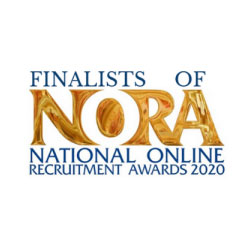
Starting a new job is nerve-wracking for anyone, but imagine doing it in a new country, a different language, and an unfamiliar workplace culture. That’s the reality for thousands of international hires. And too often, even when employers get the recruitment right, they get the post recruit wrong.
Here’s the truth: great onboarding doesn’t just help new employees adapt but also makes them feel they belong. And when it comes to global talent, a culturally aware approach can mean the difference between long-term success and early resignation.
So, how do you help international hires not just join, but thrive?
Step 1: Understand That Culture Isn’t Just National
Culture goes beyond nationality. It involves communication, conflict resolution, feedback, hierarchy, and time perception. For instance, a German employee may expect direct feedback, while a Japanese colleague might find it rude. A Brazilian may prioritise relationship-building before getting to work, while a UK team member prefers to dive right in.

Ignoring these differences during onboarding can lead to confusion and isolation, whereas acknowledging them fosters trust.
Step 2: Prepare Your Team Before Day One
Onboarding should be a two-way learning experience, especially for international recruits.
Before your new team member starts, ask:
– Is the team aware of their background, working style, and language?
– Are managers equipped to provide culturally sensitive feedback?
– Do team members understand what “inclusion” looks like in practice?
Simple actions, like sharing a cultural profile or offering coaching on intercultural communication, can make the first day feel more welcoming.
Step 3: Think Beyond the Handbook
Every new hire gets a laptop, login, and staff handbook. But international hires need more, and it does not need to be complicated.
Here are some suggestions:
- A welcome lunch inspired by their cuisine.
- A quick guide to local workplace norms (e.g., how meetings are run, lunchtime habits, bank holidays, etc.)
- A buddy system is helpful.
Even things like setting up their workstation with a regional plug adaptor or offering help with local transport apps or tips can show that you’ve thought about their real life, not just their role.
Step 4: Clarify Expectations, Early and Often
Assumptions should be avoided in a multicultural environment. One person’s idea of “taking initiative” may seem like “overstepping” to another. That’s why clarity is KEY.
From day one:
- Be explicit about performance expectations and communication preferences
- Check in regularly (especially in the first 3 months)
- Genuinely invite questions and encourage them.
And always make space for feedback. New hires may spot things that could make onboarding better for the next international colleague.
Step 5: Build a Sense of Belonging, Not Just Inclusion
Cultural onboarding is more than just respect. It’s about giving diverse hires a real seat at the table.
Celebrate their perspective by asking for their input and inviting them to shape the team, not just fit into it. Because when global talent feels seen and valued, they do their best work and stay longer. Research from Glassdoor and Brandon Hall Group shows that great onboarding can improve employee retention by 82%.

Final Thoughts
Global hiring isn’t just about filling roles across borders but about building teams that thrive across cultures. At ABL Recruitment, we’ve worked with candidates and clients from all over the world, and we’ve seen firsthand that culturally aware onboarding is one of the most overlooked (and powerful) tools for retention.
Want to make sure your next hire feels truly at home?
Start with the warm welcome and make it count.
hir











